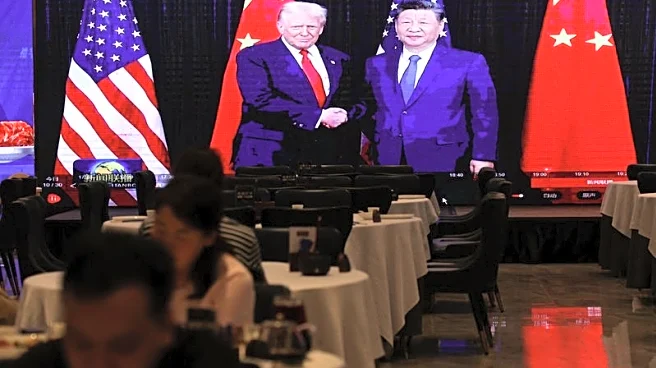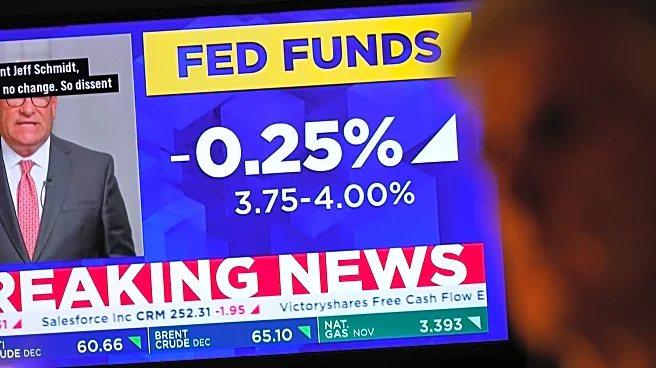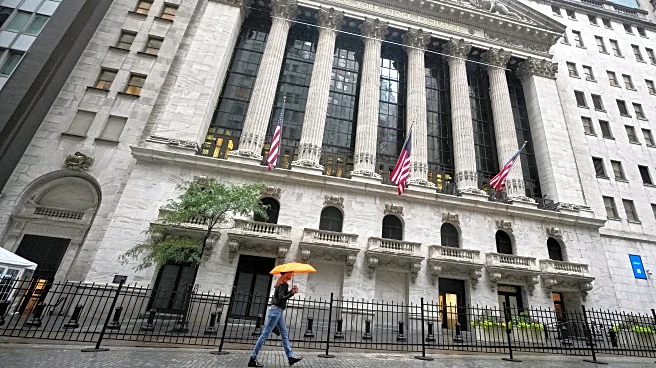What's Happening?
Gold futures opened at $3,942.80 per ounce on Thursday, October 30, 2025, marking a 1% decrease from the previous day's close of $3,983.70. This decline follows the Federal Reserve's decision to reduce
interest rates by a quarter point, which has influenced investor sentiment. Additionally, a temporary truce in trade tensions between the U.S. and China has been reached, with both countries agreeing to pause retaliatory measures. These developments have contributed to a moderation in gold demand, as investors adjust to the new economic landscape.
Why It's Important?
The fluctuation in gold prices is a critical indicator of investor confidence and economic stability. The Federal Reserve's interest rate decision and the U.S.-China trade truce are significant factors influencing market dynamics. Lower interest rates typically decrease the opportunity cost of holding non-yielding assets like gold, potentially boosting demand. However, the trade truce may alleviate some economic uncertainties, leading to a decrease in gold's appeal as a safe-haven asset. These changes can impact various sectors, including finance, manufacturing, and international trade, as stakeholders reassess their strategies in light of evolving economic conditions.
What's Next?
Future movements in gold prices will likely depend on further developments in U.S. monetary policy and international trade relations. Investors will be closely watching the Federal Reserve's next steps and any changes in the U.S.-China trade agreement. Additionally, economic indicators such as inflation rates and employment data will play a crucial role in shaping market expectations. Stakeholders may need to adapt their investment strategies to navigate the potential volatility in the gold market.













